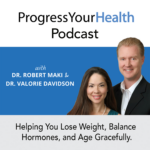
Two common questions we get all the time is: how much does BHRT cost? And will my insurance cover it?
If I had a dollar for every time, I have been asked this question I might have a pair of those fancy Christian Louboutin heels. It’s okay because I can’t stand heels anyway, but the cost of Bioidentical Hormones is undoubtedly a significant concern.
People have budgets, so they need to know if their BHRT is going to cost them a car payment, nothing or something in between. Considering BHRT can be an ongoing monthly prescription, these are valid questions.
I have been prescribing BHRT since 2004. In that time, the cost of BHRT and insurance coverage has changed a lot. Since BHRT has increased in popularity, some compounding pharmacies have started charging more and more.
Injectable growth hormone is a perfect example. Per month growth hormone has gone from the price of a fancy dinner to more than a round-trip airline ticket to Hawaii. Also, we are well aware of the breakdown and many changes to our healthcare system. This change made what used to be almost 100% coverage of BHRT to pretty much 0%.
I work with a few compounding pharmacies, and I am very particular which pharmacies those are. Price is an essential factor, but quality and safety is the main priority. BHRT is not a supplement or vitamin. BHRT are prescription medications. That means you do not want to take something that you might be questioning quality over price.
Compounded thyroid medication is a good example. If the T3 (Liothyronine) dosage is altered by the smallest of micrograms, a patient can end up in the emergency room with a heart arrhythmia.
So what are you going to pay for BHRT? Unfortunately, this is a loaded question without a definite answer. It depends on how many BHRT prescriptions you are taking. As well as what dosage and the type you need for your specific health goals.
To be incredibly broad (sorry) each prescription is going to cost between $30 to $70. With the average cost of a prescription being right around $50.
Sorry to break this to you, but insurance is most likely not going to cover any of it. Some insurances might cover a portion of the prescription, but usually not the full cost.
Conventional hormone replacement can be covered by insurance, but these hormones cannot be tailored to the individual and have some unwanted side effects. This is why patients do well on custom BHRT, but unfortunately, there is going to be an out of pocket pricing. I understand this episode may seem vague and might leave you frustrated. But honestly, this is the best I can tell you. And I am sure the cost and insurance coverage will continue to change.
If you have concerns, questions or even your personal story, please post in the comment box below or email us at [email protected]
The post How Much Do Bioidentical Hormones Cost? | PYHP 026 appeared first on .
Discover the common and unfamiliar symptoms that you might be experiencing. Get access to cases of real women with hormonal conditions.

In this episode, we talk about hormone treatments for perimenopause and menopause. There is a vast distinction between perimenopause and menopause when it comes to treatment options. We often see women who are being treated for menopause when they are genuinely not in menopause. Meet Linda: Linda is a listener who sent us a question […]
Recently, Catherine posted a question on our website about Biest cream, and we knew this could interest our listeners. Biest is a combination of estriol and estradiol, one of the most common forms of estrogen therapy used in bio-identical hormone replacement. There are many doses, ratios, options, and methods of using Biest, so we thought […]
Welcome to the Progress Your Health Podcast! This is a podcast that helps you learn about balancing hormones, especially during perimenopause and menopause. We love hearing from our listeners. If you have a question, please visit our website and click Ask the Doctor a question. Let’s read Brigitte’s question! I have been listening and learning […]
In this episode, we talk about the difference between perimenopause and menopause. Both Dr. Maki and I (Dr. Davidson) have worked with women in perimenopause and menopause since 2004 and sometimes get a bit myopic and technical when it comes to explaining the differences. The other day, a patient of Dr Maki’s asked the question, […]
We recently got a great question from a listener and want to share it with you. This question is about a perimenopausal 51-year-old female. She is still menstruating and having confusion about her hormone testing and the hormone therapy that she is currently taking. She is experiencing some breast tenderness and irritability related to her […]
in this episode, we answered a listener’s question. We love questions from listeners. If you have a question, please visit our website and click Ask the Doctor a question. Here is the listener’s question: I have been perimenopause for at least 4 years now I am 47 and after completing a Dutch test with a […]